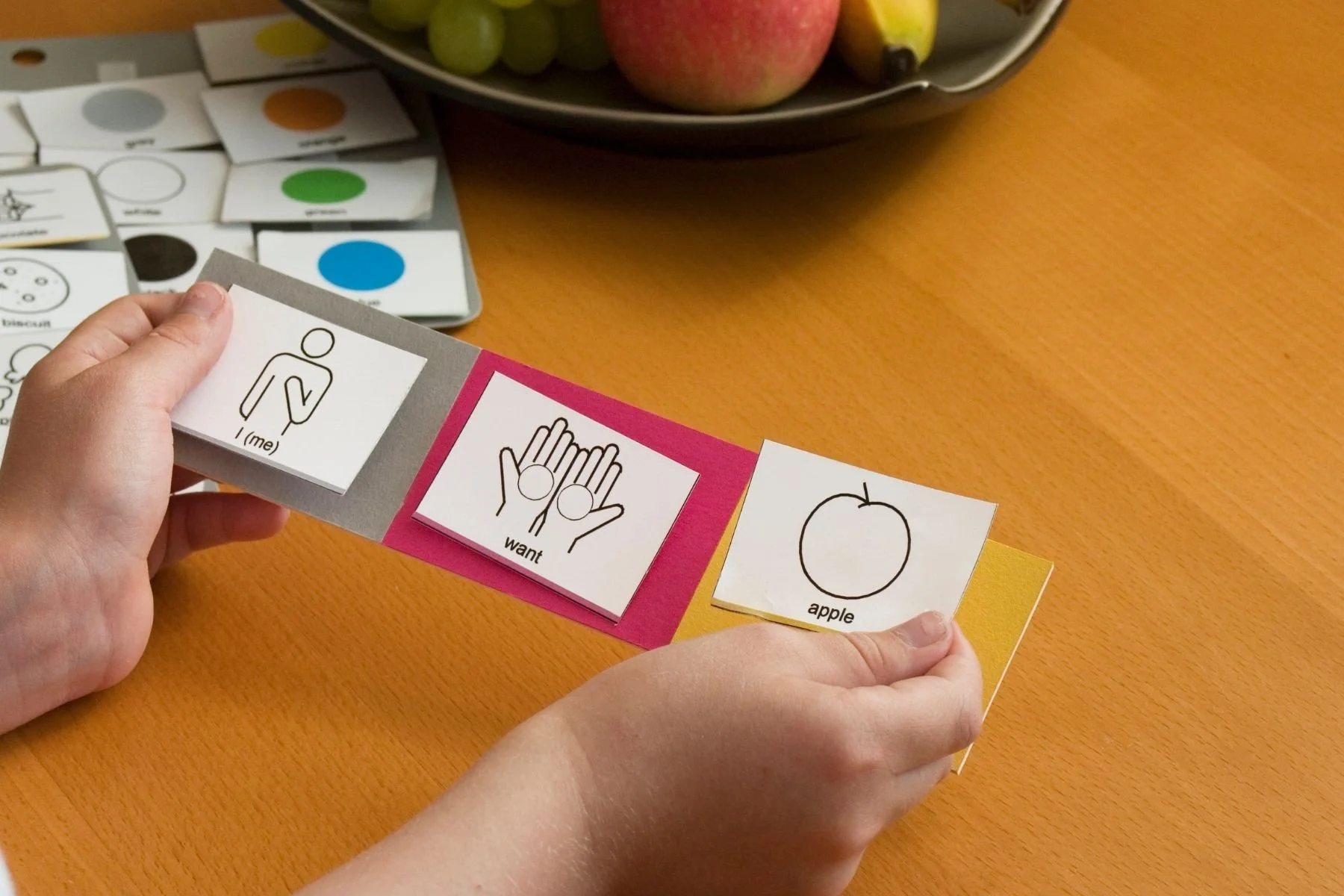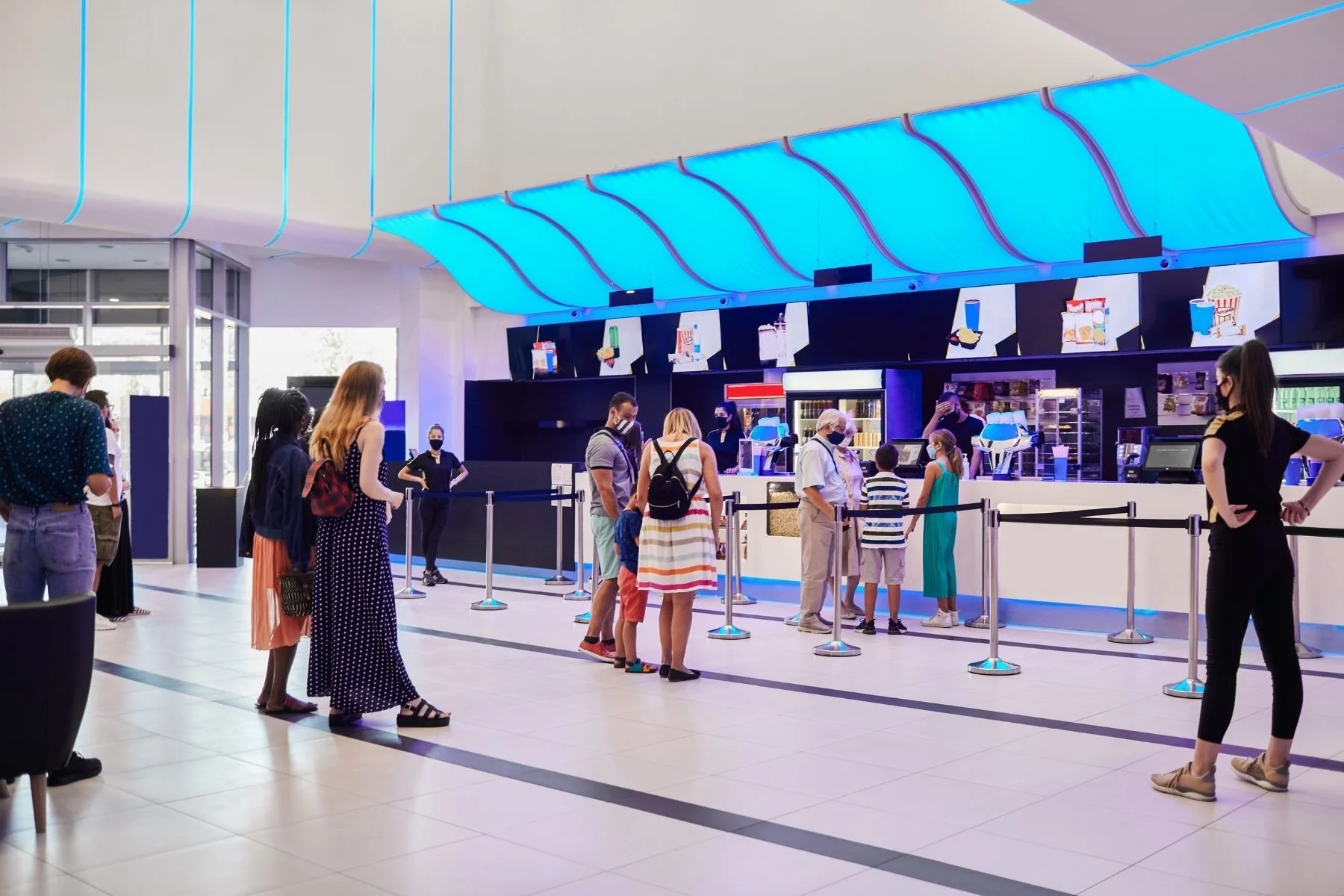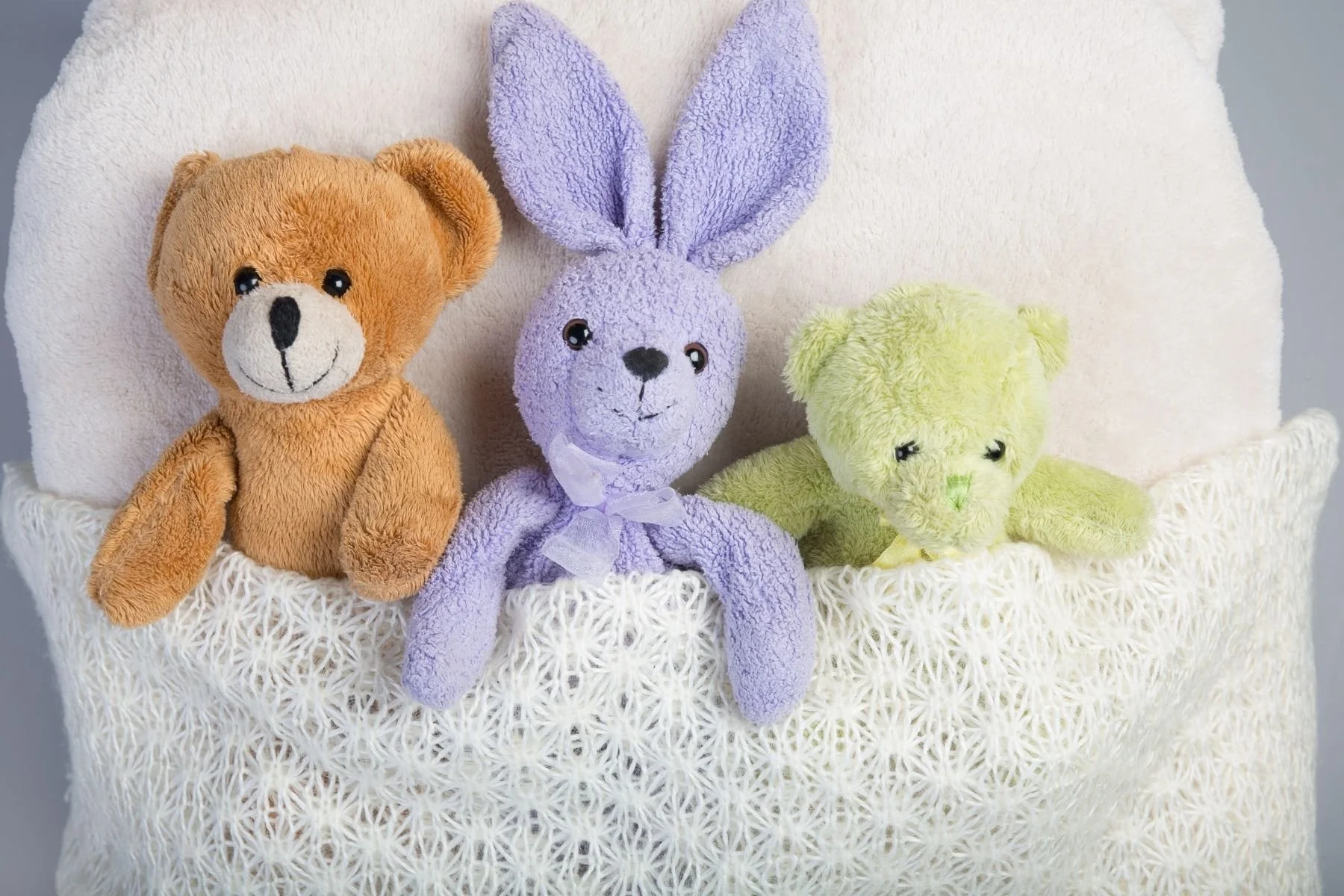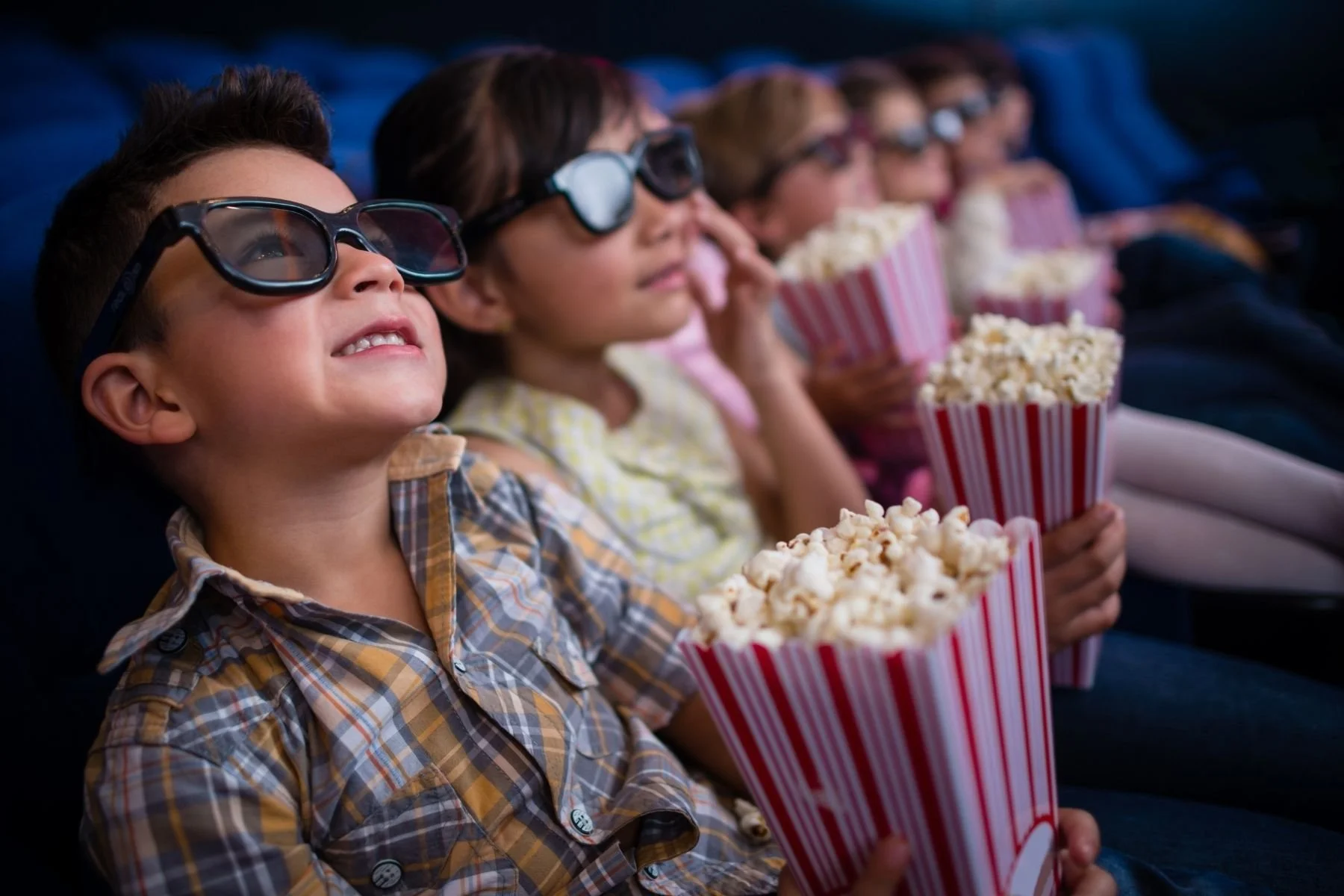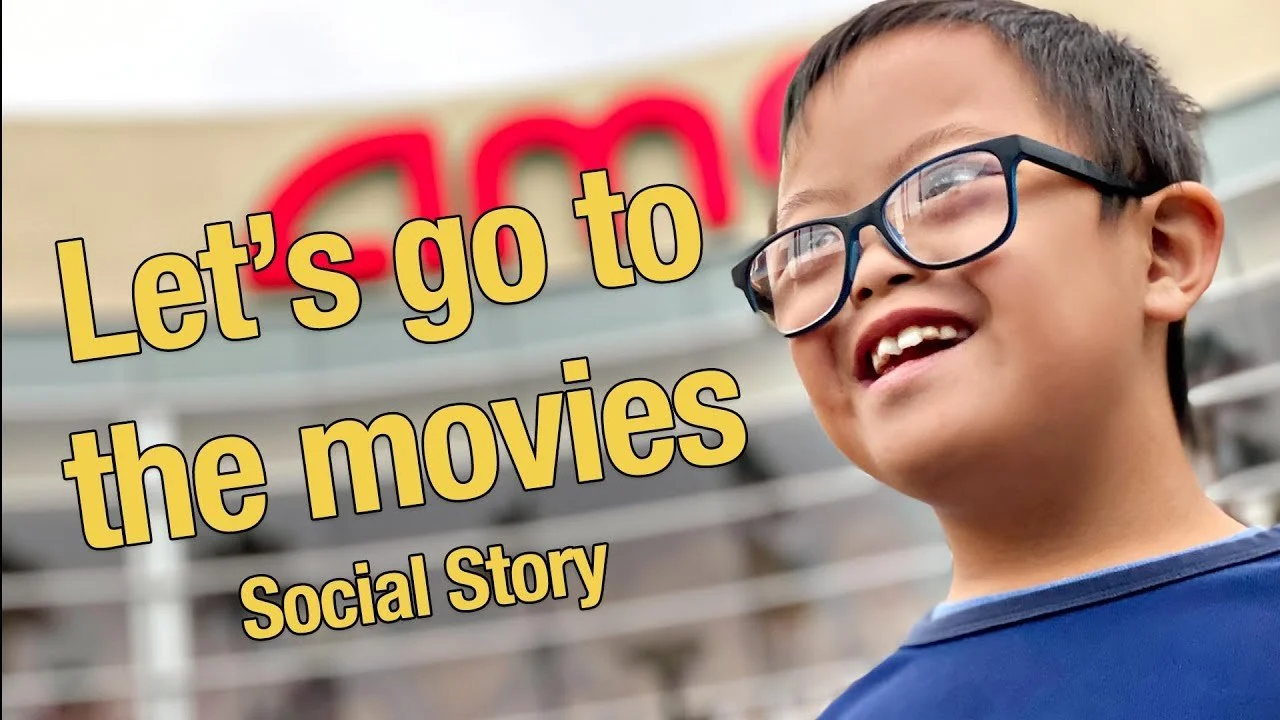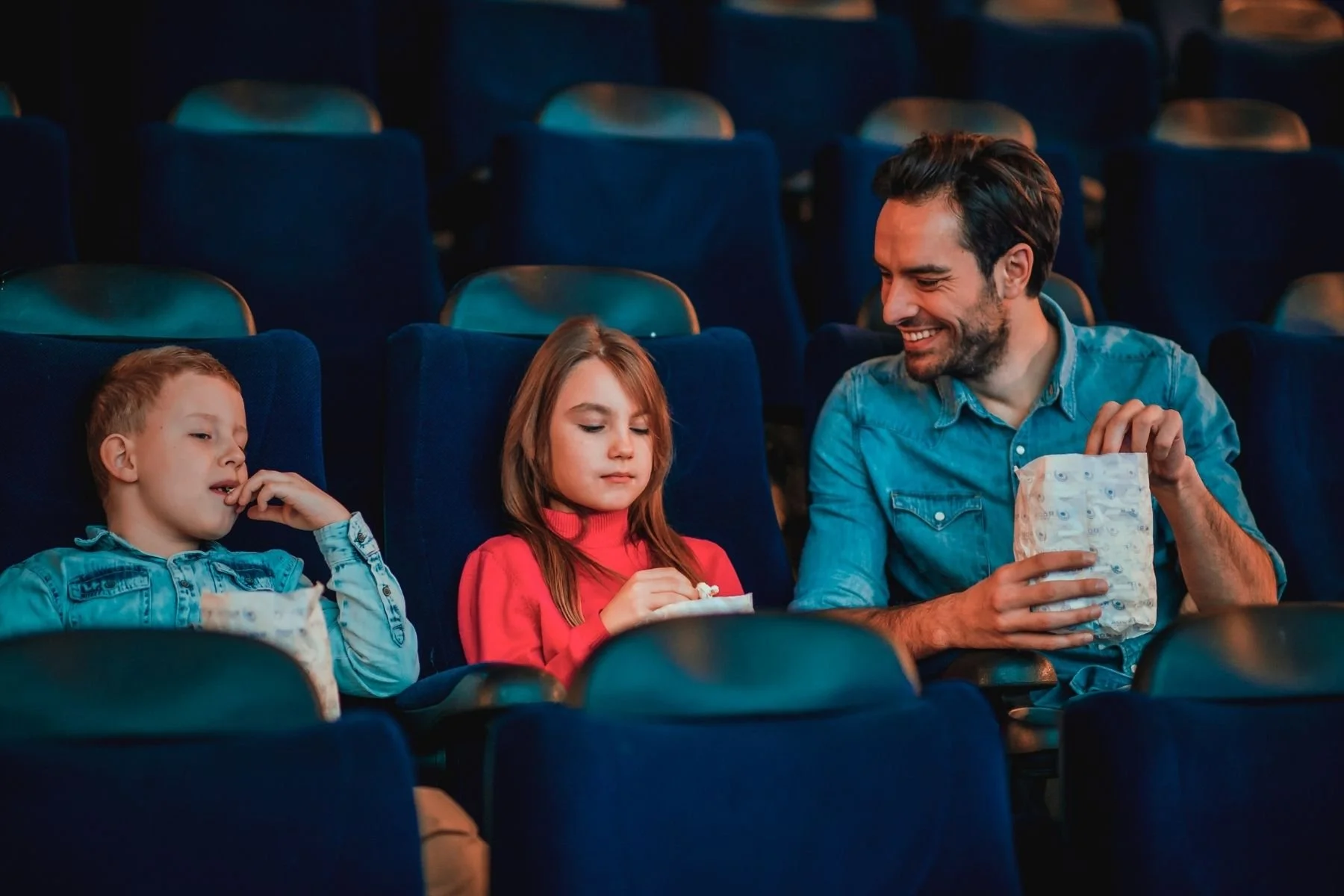Going to the Movies? 15 Pro Tips Every Autism Parent Should Know
As a family we love to go to the movies. My husband especially loves seeing movies on the big screen. It’s an activity we want to incorporate into our regular family time (like 1-2 times a month, nothing crazy). However, this is easier said than done since anytime you leave the house with an autistic individual there can be challenges: rigidity, sensory issues, communication barriers, etc.
I’m here to give you hope. Once you find the right strategies for your child it’s a pretty easy activity and can be lots of fun.
Going to the movie theatre can pose many different challenges for those on the spectrum.
Here are a few to look out for:
where they’re going to sit - how close to the screen, who will they sit beside?
how loud the movie is
getting bored or uncomfortable
the movie theatre temperature
the bathroom - how to find the bathroom, loud hand dryers, etc.
snacks and drinks
1 - Get free Seats
Who doesn’t like free tickets? I know I do. Lots of theatres allow a helper or aide for those with special needs or disabilities - free of charge. It’s a pretty sweet deal. So bring an aide or friend to help manage the challenges of going to the movies.
Here in Canada we have a program called Access 2. It’s a card you apply for through Easter Seals Canada. The card has many benefits including free entrance for a support person. Click here to apply for the Access 2 card. Any special needs or disabled person in Canada should be part of this program.
Easter Seals is Canada’s largest local provider of programs, services, and issues-leadership and development for the disability community.
Other countries like the UK (UK Disabled Identification Card) have similar programs, but I don’t have personal experience with them. If your country has something like this please share the love in the comments section and I’ll add the info here.
2 - Choose Your Seats
Covid mandates have provided some unexpected benefits. Most theatres now require you to choose your seats when buying tickets (either on line or in person). This lets you prep your child before you enter the theatre. They’ll know exactly where they’ll sit - who they sit beside, how close to the screen, etc.
We find this useful because it’s predictable; no scouring the rows for available seats while your child slowly (or not so slowly) is overcome with anxiety.
The back row on the entrance side is our favourite place to sit when bringing our 5 year old autist son. Heres some reasons we choose it:
The big screen is furthest away - reducing visual overwhelm
It’s close to the exit incase you need a quick getaway - bathroom break, noise issues, meltdown, etc.
Doesn’t disturb those behind you - our autistic son enjoys watching or playing on his iPad and iPhone during the movie (with headphones on). his bright screen doesn’t bother anyone since no one is behind us.
FYI - If you’re using the Access 2 card or a similar program you’ll need to buy your tickets and reserve your seats at the theatre. It usually cant be done online.
3 - Use Visuals
Visuals win again. Seeing where they’re going mentally prepares them and reduces anxiety. Visuals help those with delays in auditory processing (which means it takes them longer to process & understand what someone says or they don’t process it at all).
You can pull up photos on your phone of your local theatre or a similar theatre and show them to your child; Google image search is great for this.
You can also use generic PEC type cards or draw going to the movies (use paper & pen or Boogie Board)
I’ve downloaded pictures of our local theatre and created picture cards to use on our sons first & then boards. We put different stages like, First = Van, Then = Theatre
4 - Arrive Early
Being early is really helpful. Theres lots of reasons to be early. Here are just a few:
Gives your kid time to adjust and feel comfortable (experts say it takes at least 10 min for people to adjust to a new room or space and special needs kids usually take longer)
No rushing to your seats
You have time to go to the bathroom
If you don’t like the seats you chose you have time to switch them
More time to get snacks or a drink
If you’re buying tickets in person then you’ll have more seat options
5 - Bring Something they love
Bringing a comfort item they love is always a good idea. Comfort items like blankets, stuffed toys, chew items and electronics help reduce anxiety and bridge your home to the theatre. That way, not everything feels foreign.
A well loved blanket can make all the difference when trying to make an unfamiliar place feel natural. Just make sure not to forget it there ;)
6 - Use Headphones or earplugs
This one is pretty essential for our family. Our 11 yr old son, Jude, needs noise canceling headphones at the movies. He’s sensitive to sound and doesn’t’ enjoy a loud movie theatre. Our 5 year old also wears headphones but prefers to be listening to paw patrol or something like that on his iPhone.
We have adult hearing protection headphones we bought off Amazon. These are the ones we have. Jude likes that they reduce the volume and extra noise but still allows him to hear some things. The kids also wear these sometimes while I’m vacuuming, their siblings are being noisy or the organ is playing at church.
Adult sized hearing protection can also be bought at hardware, sporting or hunting stores.
Kid sizes can be bought off amazon or at local kid/baby stores.
7 - Have Other Entertainment
Yes, you’re at the movies to see a movie but that doesn’t mean your child needs to be fully engaged the whole time.
We know that our 5 yr old doesn’t enjoy the unpredictability of movie theatres. He’s not big on watching new movies or shows as it is, so watching a new movie in an unfamiliar place isn’t his jam…yet ;) But we love seeing new movies so we’re helping him enjoy himself while we do an activity we love. We always pack Leo’s iPhone, iPad, headphones and a few toys to entertain him. He had a cute little backpack we take everywhere that has all his go to essentials.
Try to be respectful and considerate of other movie goers. Make sure your other entertainment is quiet/silent and non disruptive to others.
Bottom line, don’t expect your child to be completely entertained by the movie they’re seeing, pack quiet alternatives.
8 - Bring on the treats
Food almost always keeps kids, and adults, busy. Having something to eat or drink is comforting, distracting and typically keeps people in a good mood.
I always have a pouch of suckers/lollipops, Hershey Kisses, fruit snacks or other small treats accessible in my purse or diaper bag. When a kid is getting restless or irritable a sucker or drink often helps.
Typically theatres have policies for outside food but are more lenient when it comes to small children, people with special needs and those with specific diets. I
Of course theres always the concession stand where you can find popcorn, candy, chocolate, food (burgers, nachos, hot dogs, etc) and drinks.
Be forewarned, if you buy treats at the concession stand be prepared to always buy treats. Once the precedence has been set it can be hard to change the expectation with some kids. You know your circumstance and child the best, so you be the judge if the concession stand is doable.
We only get popcorn and drinks on special occasions and the kids have come to expect this. We’re also very clear with the kids about the food situation before leaving the house and before entering the theatre building. “Kids, remember we’re not buying treats today. We can have popcorn and pop when we get home. No buying food”
9 - Avoid 3D & D-Box
People with autism frequently have sensory sensitivities. Movie theatres are a lot on the senses to begin with, adding 3D or D-Box is just going too far for many people. Unless you know your child can handle 3D or moving seats, avoid this movie experience; at least until they’re comfortable in the theatre.
We rarely go to 3D movies and never go with our 5 year old, Leo. He doesn’t keep the 3D glasses on so it’s not only irritating for him but also a waste of money for us. We save the 3D experience for when we see a movie with the older kids or just us adults.
10 - Wear Layers
Theatres can be too cold or too hot. I personally hate going to a movie and freezing my butt off, it makes the movie way less enjoyable.
For those with sensory sensitivities it can be downright painful.
It’s a good idea to bring options that allow you to adjust to the rooms temperature. I always have my kids wear a short sleeve t-shirt and bring a cozy hoodie to the movies. That way they have options and can stay comfortable and warm.
11 - Push through transitions
I’d be lying if I said all the strategies make it meltdown free. We still deal with anxiety, crying and refusing to go somewhere - anywhere - despite using social stories, communication cards, timers, rewards, etc.
As much as I advocate for body autonomy and personal choices I know that sometimes people need a gentle push to get them through uncomfortable situations; children with autism are no different.
Leo, our 5 year old with autism, struggles with transitions but we know he has fun once he gets to the next place.
The stress of leaving the comfort and predictability of home can be overwhelming. Leo often wont put on shoes or a coat and we carry him to the van crying. Once in the van he quickly bounces back and is in a good mood again. He’ll then be upset going into the dim theatre and quickly calms down when he sits in his seat and has his phone.
Transitions are a constant challenge but we gently push through them.
12 - Read a social Story
Social stories help kids with autism as they walk through typical situations and appropriate behaviour and responses. They include visual and verbal/reading components.
You can read or watch social stories about going to the movies. I’m making an Autism Social Story about going to the movies, so stay tuned for that.
YouTube is a great place to find all kinds of social story videos. Heres a few good options: Let’s Go to the Movies (photo below) or Going to the Movies 2022.
This one is a funny video for movie theatre etiquette. Despite featuring puppets, it’s definitely meant for older kids or adults and maybe not everyones cup of tea, but I find it pretty awesome.
13 - Go to Special Showings
Many theatres have special showings for people with disabilities or small children. What makes these a great option is dim lighting, non 3D, lower sound volume and like minded people in theatre (more understanding of your child being vocal or needing to leave the theatre).
Cineplex has their Stars and Strollers program (if your child is sensitive or easily irritated by small children and baby noises this might not be the right showing for them).
Ask your local movie theatre if they have a good option for those with special needs.
You can also rent out the theatre or book it for a special event. Maybe coordinate with friends, family or the local autism community and rent it out together, this will save on costs and make it more enjoyable for your child.
14 - Make the drive Relaxing
Nothing makes a movie theatre experience stressful like rough drive there. If the drive is stressful your child will be stressed when they get to the theatre. If the drive is calm your child will be calmer.
Put on their favorite movie or music while you drive or just drive in silence; whatever creates the most serene situation.
15 - Go when it’s not busy
When it’s less busy, there’s less people, less noise and less chaos. I’ve found that theatres off times make a smoother movie experience. When deciding to go to the movies avoid holidays, days off from school, bad weather days, weekends, evenings, etc.
It may seem like there isn’t much left but trust me, there are plenty of times when the theatres are practically empty.
If you aren’t sure whens the least busy time just call your local theatre.
16 - Be Flexible (Bonus)
I think “Be Flexible” ends most of my posts - probably because it’s so important. Life often goes differently than planned, despite doing all the right things and being thoroughly prepared. As an autism parent you need to roll with the punches, sometimes literally.
Having a child who is rigid or particular means you need to accomodate more. Expect the unexpected and you’ll never be disappointed.
Hello!
I’m Kate and I’m a mom of four. Since 2010 we’ve had one baby born with a bilateral cleft lip and palate and three children diagnosed with autism. Parenting certainly hasn’t been what I was expecting - it’s been harder (like A LOT harder) and much more wonderful. My world has expanded and knowledge deepened as I’ve spent the last decade raising these four special kids. Supporting other moms of autistic and cleft children is my passion. Here you’ll find information, strategies and first hand experiences to help you navigate these special challenges on-the-go and in your own home.




